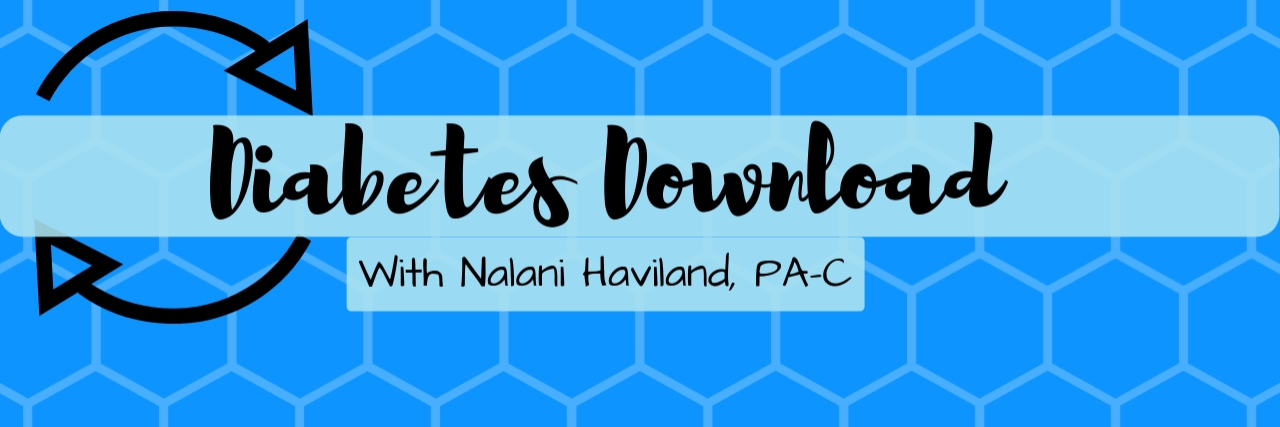Diabetes Download: What Is 'Dawn Phenomenon' and How Do I Prevent It?
In Diabetes Download, Nalani Haviland, a board-certified physician assistant and diabetes expert who has type 1 diabetes herself, answers the Mighty community’s questions.
Editor's Note
If you wake up in the morning with a high blood glucose reading, you may be experiencing “dawn phenomenon.” In this column, Nalani Haviland, PA-C, explains what causes this phenomenon and how to prevent it.
This column is solely for general education and information. It is not intended to provide any medical advice and cannot replace or be a substitute for your relationship with your healthcare provider. Always talk to your clinician for any issues or questions.
The Mighty community asked: “My blood glucose levels always seem to spike significantly early in the morning. I’ve heard it could be from something called ‘dawn phenomenon.’ What is that? How can I prevent it?”
“A high morning reading ruins my whole day!” I hear this quite often! Early morning highs are difficult and often require multiple correction boluses. These a.m. highs are the result of a normal increase in the production of growth hormone, cortisol, and epinephrine, usually around 2 a.m. We call this “dawn phenomenon.” In non-diabetics, insulin production is simply increased, however in PWD, this is not possible. The result is an increase in the
production of glucose by the liver… hence, the rise in blood glucose levels.
When on an insulin pump, basal rates can simply be increased overnight, preventing dawn phenomenon. If a pump is not available however, things can get much more complicated. Let me try to explain… There are many basal insulins currently available: Levemir, Lantus, Basaglar (generic of Lantus), Tresiba, and Toujeo. To best understand how to fend off dawn phenomenon, we need to understand the mechanism of action of each.
Levemir, Lantus, and Basaglar are made up of different components, but act very similarly. All can be taken between one to two times a day. Levemir begins working within one hour, peaks in five hours, and has a duration of 18 to 24 hours. Lantus and Basaglar begin working in one to two hours, peak at six hours (less peak than Levemir), and have a duration of 18 to 24 hours.
These three insulins when given at the correct time will counteract “dawn phenomenon” with their peaks. But remember, a large nighttime dose can make it difficult to time this while still preventing nocturnal hypoglycemia before the peak. A peak of your insulin at 12 a.m., for instance, may be the cause of your nighttime lows. Also keep in mind, not everyone has a “dawn phenomenon.”
Additionally, Lantus, Basaglar, and Levemir can be split into two doses if they are not lasting a full 24 hours (this is very common). For instance, Lantus given at bedtime may lose its efficacy around dinner the next day. The prandial (mealtime) insulin given for dinner will work for four to five hours after that but since Lantus takes one to two hours to kick in, there would be a gap in coverage leading to elevated morning glucose levels. This phenomenon is often misinterpreted as “dawn phenomenon.” People who experience this should try splitting their doses (with your clinician’s approval, of course).
The newest basal insulins available include Toujeo and Tresiba, both of which require one injection per day and have no true peak. This leads to very stable blood glucose levels, but cannot be timed to fight “dawn phenomenon.” Toujeo begins working after six hours and has a duration of 24 to 36 hours. Tresiba begins working after one hour and has a duration of >42 hours. Because of this, Tresiba can be injected at different times of the day (>eight hours from previous dose) and eliminates the “gap” problem that I mentioned above. Tresiba is therefore great for people with hectic schedules or who sometimes miss their dosages.
I’ve been getting a lot of questions about this lately, so I hope this explanation helps!
Glossary of Terms
Type 1 Diabetes: A chronic condition that occurs when the pancreas produces little to no insulin. As a result, the body is unable to properly process glucose for energy. It is primarily managed with frequent blood glucose monitoring, diet, exercise, and either insulin pump therapy or multiple daily injections.
Type 2 Diabetes: A chronic condition resulting from insulin resistance and/or an inadequate response to insulin secretion. This results in the body’s inability to properly process glucose. It is managed with frequent blood glucose monitoring, oral or injectable medications, diet, exercise, and sometimes insulin.
Blood Glucose: Another name for blood sugar. Having blood glucose levels that are too high or too low is the hallmark sign of diabetes.
Insulin: A hormone produced by the pancreas. Insulin allows for the regulation of blood glucose and without it, the body cannot process glucose for energy. People with diabetes must get their insulin either through injection or insulin pump therapy.
Diabetic Ketoacidosis (DKA): A complication of uncontrolled diabetes caused by an insufficient amount of circulating insulin. This usually leads to high blood glucose levels and a buildup of blood ketones, byproducts of the breakdown of fatty acids. Untreated diabetic ketoacidosis can lead to coma and death.
PWD: Person with diabetes
Basal Insulin: Also called “background insulin.” In people without type 1 diabetes, the pancreas supplies consistent basal insulin to maintain blood glucose levels between meals. People with type 1 diabetes must inject long-acting insulin to maintain correct blood glucose levels.
Bolus Insulin: Insulin made by the pancreas in response to glucose consumed in food. People with type 1 diabetes must inject rapid-acting insulin immediately before a meal to maintain correct blood glucose levels.
Follow me on Instagram at @diabetes_pa, on YouTube, and on my website.

